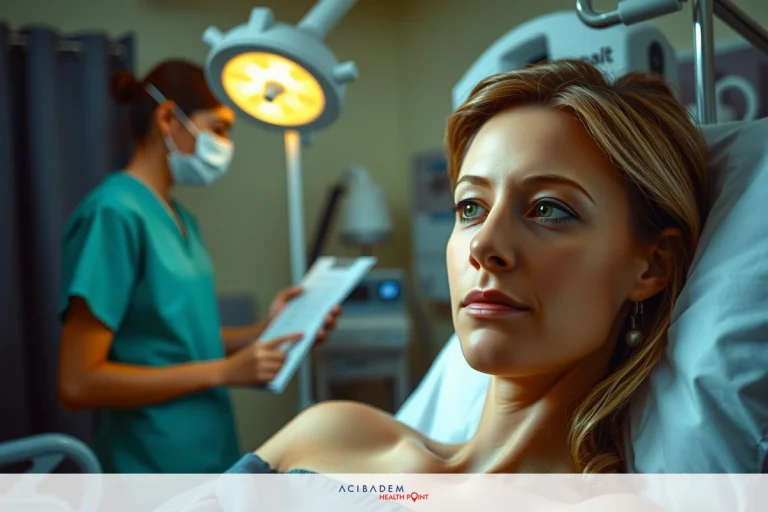Can You Reverse a Rhinoplasty?
Can You Reverse a Rhinoplasty? Patients opt for rhinoplasty procedure for a variety of reasons, spanning from medical necessity to individual aesthetic preferences. But what happens when the results don’t meet expectations? The concept of reversing a rhinoplasty procedure comes into play.
The possibility of reversing a rhinoplasty is an intriguing topic. It raises questions about the technical process, potential risks, and expectations for results. This article focuses on providing factual information about these aspects without delving into personal opinions or anecdotal experiences. The aim is to provide an understanding of the complexities involved in such an undertaking.
Rhinoplasty Reversal
Rhinoplasty reversal is a complex surgical process that primarily aims to undo the changes brought about by a previous nose job. It’s a secondary surgery that requires great precision and a deep understanding of the patient’s nasal anatomy. This need for precision arises from the fact that the prior nose job has already altered the original structure of the nose.
The feasibility of reversing a rhinoplasty largely depends on the specifics of the initial procedure. For example, if the first surgery involved removing a significant amount of cartilage or bone, it might be challenging to restore the original shape without additional grafts. Furthermore, each surgical intervention creates scar tissue which can complicate subsequent procedures. Therefore, while it’s technically possible to reverse rhinoplasty, it’s not always practical or advisable.
It’s important to note that reversing nose surgery isn’t about achieving perfection or returning to your exact pre-surgical appearance. Instead, rhinoplasty reversal focuses on correcting specific issues from the previous operation and improving overall nasal function and aesthetics. Potential patients must have realistic expectations and a thorough understanding of what this procedure can achieve before deciding to proceed with a reverse rhinoplasty.
Factors to Consider
Before proceeding with a decision to reverse a rhinoplasty, there are several important considerations that should be taken into account. The process of undoing a nose job is not as straightforward as it might seem. It involves intricate surgical techniques and can pose certain risks. Here are some key factors to keep in mind when considering rhinoplasty reversal.
- Medical Evaluation: Not everyone is a suitable candidate for reversing nose surgery. A thorough medical evaluation is crucial to determine your eligibility for the procedure.
- Surgeon’s Expertise: Rhinoplasty reversal requires a highly skilled and experienced surgeon. It’s essential to research and find a qualified professional who specializes in this type of procedure.
- Realistic Expectations: As mentioned earlier, reversing a rhinoplasty doesn’t mean returning to your exact pre-surgery appearance. You must have realistic expectations about what can be achieved.
- Cost: Rhinoplasty reversal can be quite expensive, and it may not be covered by insurance. Make sure you’re aware of all costs involved before making your decision.
- Recovery Time: Like any surgical procedure, reversing a nose job has a recovery period. This includes potential swelling, bruising, and downtime from work or daily activities.
- Potential Risks: Every surgical procedure comes with potential risks, including infection, bleeding, or adverse reactions to anesthesia. It’s vital to understand these risks before deciding on rhinoplasty reversal.
- Psychological Impact: The decision to undergo a reverse rhinoplasty can have psychological implications. It’s advisable to discuss these potential impacts with a mental health professional before making your

The image depicts a hospital scene with medical personnel. A woman is lying on an examination table. There’s another female figure standing over her, likely a healthcare professional dressed in surgical attire, who appears to be assisting or evaluating the patient. decision.
Understanding these factors can help you make an informed decision about whether rhinoplasty reversal is the right choice for you.
Recovery and Results
The recovery process following rhinoplasty reversal is a critical phase that significantly contributes to the final outcome. Patients should be prepared for a period of healing that may come with some discomfort, such as swelling, bruising, or temporary changes in breathing. It’s important to follow all post-operative care instructions provided by your surgeon to ensure optimal healing and reduce the risk of complications.
Typically, the initial recovery period after reversing nose surgery lasts for about two weeks. During this time, patients are advised to rest, avoid strenuous activities, and keep their head elevated even while sleeping. This helps minimize swelling and promotes faster healing. It’s also crucial to attend all follow-up appointments with your surgeon so they can monitor your progress and address any concerns promptly.
As for the results of rhinoplasty reversal, they begin to emerge once the initial swelling subsides, usually around three months post-surgery. However, it can take up to a year or longer for the nose to completely heal and the final shape to become apparent. The outcomes are generally positive for patients who had realistic expectations pre-surgery. Technically, if the rhinoplasty reversal was performed correctly by a skilled surgeon and followed by a proper recovery period, patients can look forward to an improved nasal function and appearance that align more closely with their desired aesthetic.
Frequently Asked Questions
Can a rhinoplasty procedure be completely reversed?
While it is technically possible to reverse a rhinoplasty procedure, it's important to note that complete reversal may not always be achievable or advisable. The extent to which a nose job can be undone depends on various factors such as the specific changes made during the initial surgery, the amount of tissue removed, and the presence of scar tissue. Consulting with a qualified surgeon is essential to determine the feasibility of reversing your specific rhinoplasty.
Is rhinoplasty reversal a risky procedure?
As with any surgical procedure, there are risks associated with rhinoplasty reversal. These risks include infection, bleeding, adverse reactions to anesthesia, and unsatisfactory aesthetic outcomes. However, by choosing an experienced and skilled surgeon, following post-operative care instructions diligently, and maintaining realistic expectations, the potential risks can be minimized.
How long does it take to recover from rhinoplasty reversal?
The recovery time for rhinoplasty reversal can vary from person to person. Generally, the initial healing period lasts about two weeks, during which you may experience swelling and bruising. It's important to follow your surgeon's post-operative instructions, which may include avoiding strenuous activities and keeping your head elevated. Most patients can expect to see significant improvement within three months, but it can take up to a year or longer for the final results to fully manifest.
Will insurance cover the cost of rhinoplasty reversal?
The coverage for rhinoplasty reversal varies depending on your insurance policy and the reasons for undergoing the procedure. In some cases, if it is deemed medically necessary or if there are complications from a previous surgery, insurance may provide coverage. It is best to consult with your insurance company directly to understand the coverage criteria and requirements for reimbursement.
Can rhinoplasty reversal improve my breathing?
Yes, rhinoplasty reversal can potentially improve nasal breathing if the initial surgery caused functional issues. A skilled surgeon can address any anatomical changes made during the previous procedure that may have compromised nasal airflow. However, it's important to discuss your specific concerns with your surgeon, as every case is unique, and the extent of functional improvement will depend on individual circumstances.











